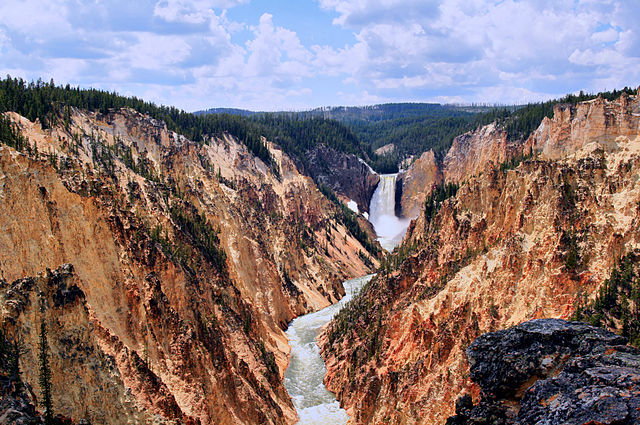By Katrina Marland

Here in the U.S., we are lucky to have some truly outstanding natural places protected for our enjoyment and education. We have no fewer than 155 national forests that encompass millions of acres and 58 national parks. But one place in particular set things in motion and created a precedent for the wealth of protected wild places that we enjoy today. That place is Yellowstone National Park, officially established on this day exactly 140 years ago.
At the time — it was 1872, for those who haven’t done the math — not everyone thought it was a good idea to close off such a large area to any type of development, no matter what remarkable natural features it possessed. Thanks to testimony from explorers, researchers, photographers, painters and yes, one or two suggestions that tourism could help the local economy, Congress formed the Act of Dedication, which set the park aside exclusively “for the benefit and enjoyment of the people.” When then-President Ulysses S. Grant signed the act into law, he created the world’s very first national park. And what a remarkable place one signature has managed to preserve.
Yellowstone’s geography, long history and multiple ecosystems have provided it with more variety than most modern-day theme parks. It has mountains, subalpine forests, petrified forests, lakes, geysers, historic sites, canyons, hot springs, archeological digs and even a supervolcano — the largest one in North America. Just a couple of the highlights include:
Yellowstone Lake: This 132-square-mile lake sits at 7,733 feet above sea level, making it the largest high-elevation lake on the continent. It is a beautiful place for boating and angling and is a hotspot for researchers attempting to learn more about the park’s formation. It also sits atop a technically still-active supervolcano.
Grand Canyon of Yellowstone: Not quite the size of its southern counterpart, this chasm is nonetheless impressive, at roughly 20 miles long, 1,500-4,000 feet wide and 800-1,200 feet deep.
Wildlife: The park’s varied ecosystems and its protected status make it a haven for wildlife species of all kinds. The park is home to grizzly bears, grey wolves, elk, lynx, 330 species of birds and the largest public herd of American bison in the U.S.

Old Faithful: Yellowstone actually holds almost 60 percent of all the geysers in the world, and this one is arguably the most famous. As its name suggests, it shoots thousands of gallons of boiling water more than 100 feet into the air at regular intervals. You can even see this phenomenon yourself on the park’s live webcam.
Of course, the park is also one of the best places in the country to hike, bike, camp, fish, boat, picnic and just about anything else you could hope to do to enjoy the outdoors. It seems fitting that, 140 years later, the first place in the U.S. to be granted such unprecedented protection is still one of the most beloved — and has paved the way for hundreds more like it.
